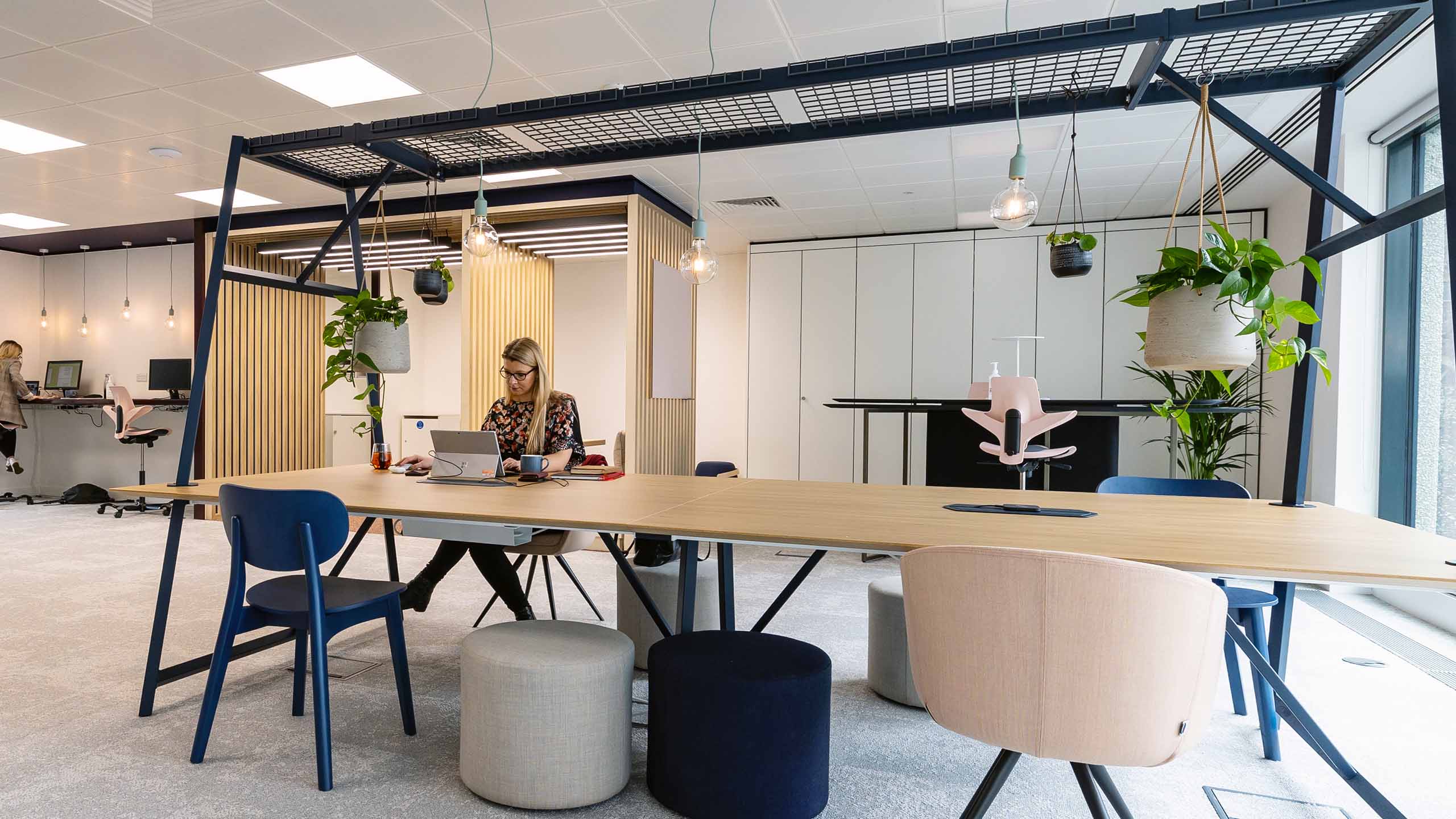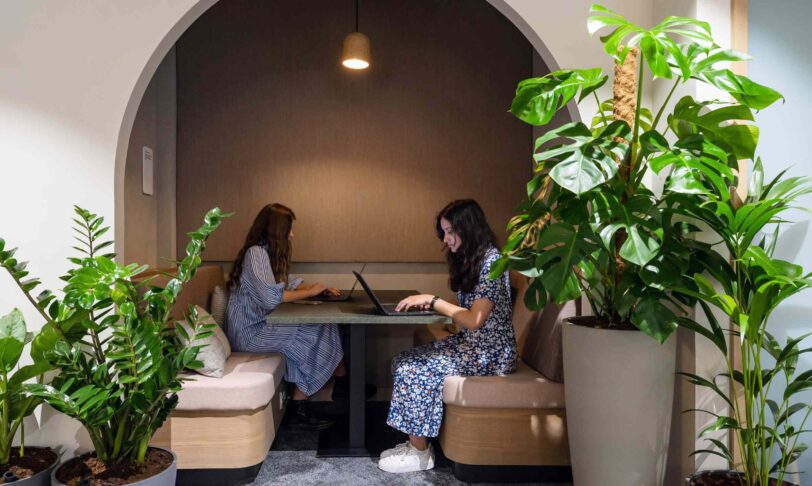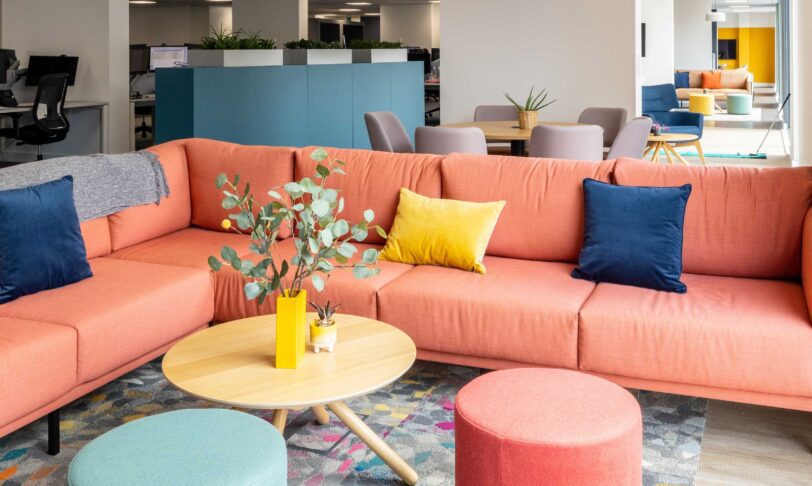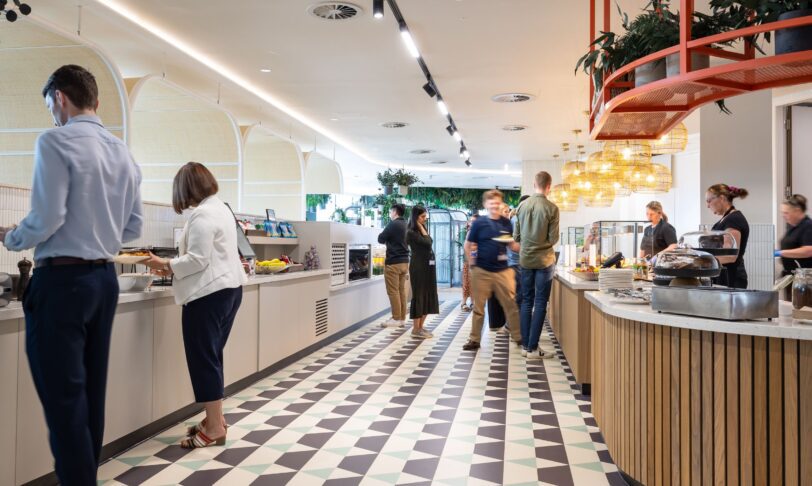The office isn’t dead (but it is furnished better)
Many organisations have now ironed out the complexities of their ‘back to the office’ strategies and therefore understand the importance of a ‘destination office’.
A destination office must offer tangible value to employees, and experiences that they cannot get at home. In this article, we explore some of the key trends that bring people to the office. More specifically, these trends relate to office furniture – one of the most important parts of a modern office.
The role of furniture in modern office design
A well-curated suite of office furniture creates a space that reflects a business’s culture, values and goals. For companies to fully realise the possibilities, furniture must be a defining feature of their office design strategy. This can have numerous benefits, including increased productivity and efficiency, as well as more creative problem-solving approaches.
Does office furniture improve productivity?
Not only can the right furniture organise and declutter workspaces, but ergonomic furniture also helps reduce fatigue and distractions. This can have boundless advantages for productivity.
Productivity shouldn’t just be defined by output, it should be defined by people consistently showing up ready to put their best foot forward. This can be achieved by providing comfortable furniture that can not only be adjusted to people’s individual needs but can also be tailored to suit various styles of working.
Does office furniture enhance collaboration?
Furniture is key to helping teams communicate and work together more efficiently. Desks that support collaborative workflows should be part of the overall office layout plan. For example, having multiple tables or desks arranged around each other can allow for creative brainstorming and idea sharing. Also, larger meeting tables help people come together quickly and easily while encouraging conversations that are less formal than traditional boardroom setups. Furniture with whiteboard surfaces also helps speed up communication by allowing ideas to be sketched out in real-time.
Can office furniture help with sustainability goals?
Office furniture can be chosen for its environmental credentials. For example, opting for certified pieces made from sustainable materials such as bamboo and recycled fabrics will help reduce the company’s carbon footprint without compromising on style or comfort. Sustainable office furniture also goes beyond materials – designing for long-term use and easy maintenance reduces the need for frequent replacements, saving on waste and its associated energy consumption.
Can office furniture enhance wellbeing and inclusion?
There is an inextricable link between inclusion – which assures that all employees are respected – and employee wellbeing. Investing in ergonomic furniture (e.g. adjustable desk and chair heights, posture-friendly desks and monitor arms) can go a long way towards creating an inclusive work environment where everyone’s wellbeing is prioritised. This furniture should ideally be placed within a flexible office layout, so everyone can access or reconfigure it as easily as possible.
Using office furniture to combine the best of work and home
Interaction has long been on a mission to #banishboringoffices. The global pandemic has certainly put an end to the days of uncomfortable chairs lining rows of too-low tables in badly-lit desk farms. As we mentioned earlier in this article, people will only come into workplaces which offer them better working experiences than they’d get at home; better chances for collaboration and inspiration, better facilities and better furniture.
Progressive organisations have realised that in order to make people desire to come back to the office they need to combine the best of both worlds – welcoming, comfortable furniture that wouldn’t feel out of place in a stylish home.
It’s here that interior styling can help by bridging the gap and enticing people back to the workplace by creating welcoming, comfortable and desirable spaces.
We’ve outlined 4 key trends that are bringing people back to the office:
- A variety of work settings
- Modular workspace solutions to maximise the space
- A workplace filled with natural light and biophilia
- Ergonomic workplace furniture and accessories
Varied and flexible work settings
A variety of work settings is vital. Solo and independent work settings must be balanced with accessible communal spaces and collaborative hubs, contributing to an environment that’s flexible enough to accommodate all working styles.
Working from home has made it easier to complete deep focused work and take video calls without distractions. Providing solo workstations can be a lifesaver for office days when individuals need peace and quiet.
Here are some of our favourite solo workstations:
- Orangebox on the QT – For when you need a little privacy
- Orangebox Coppice – Creating personal focus within busy open-plan spaces
- Senator Haven – An ideal space for ad hoc meetings and sharing ideas
- naughtone Pullman Chair – An acoustic haven for individual working or retreating
- Framery Acoustics O Booth – Ideal for one – awkward for two
Maximised workspaces
Adaptability and flexibility are also key; modular furniture allows moment-to-moment reconfiguration, depending on what it’s being used for. Modular furniture can also scale as a company grows, expanding to accommodate new spaces or employees. Similarly, a refreshed furniture strategy can revitalise an existing space and make it feel entirely new.
Below are some examples of modular furniture configurations from naughtone and Frovi.
A selection of the best modular workspace seating solutions:
- naughtone Symbol modular seating – Building blocks for furniture landscapes
- Hitch Mylius Pebble – Structured patterns, either individually or scattered
- The Senator Group Chemistry Canopy – Supports concentration and private conversation
- Frovi Colony – Visible boundaries and inviting spaces with endless configurations
- Frovi Relic at Work – Collaboration and private working through magnetic accessories and castors
- Davison Highley BEEmodular range – Soft modular elements to create the perfect layout
- Allemuir Paver – Create contemporary sofas and soft seating islands
 |  |  |
 |  |
Natural light and biophilia in the workplace
For many, home still feels like the safest place to be. Clever use of natural lighting and biophilia combined with top-quality air ventilation systems can recreate that feeling of safety in the workplace. Beautifully-designed planters, living walls and spacious shared seating areas can add levels of sophistication most people don’t get at home. Many organisations have also toned down their branding when it comes to the workplace, opting for a more homely, subdued look and further dissolving the often stark lines between the office and the home.
Here are some great examples of workplace biophilia:
- Studioscape Mobile Planters – Make booths or divide areas
- Vitra Dancing Wall – Agile structure with various configurations
- Orangebox Woods Mobile Planters – A scalable natural oasis of plants through mobile planters
- Abox Apex Storage Wall – Made-to-measure storage wall system with integrated plants
- Bisley LateralFile – Versatile storage with an optional planter top
- Workstories Urban Connect – A modular grid based shelving/storage system
 |  |  |
Ergonomic office furniture and accessories
Additionally, the best workplaces have furniture which combines pleasing aesthetics with all the benefits of ergonomic design, increasing employee wellness by helping reduce the accumulated effect of being stationary and seated for large amounts of time.
Some of our favourite examples of ergonomic workplace furniture and accessories:
- Flokk HÅG Capisco Chair – Endless ways to vary your posture
- Moventi Tia Desk – Electric height adjustable desking system
- Koplus Kin Desk – A sit-stand desk with adjustable height and width
- Sedus Se:fit Stool – Versatile stool and stand-up seat
- Herman Miller Embody Chairs – Pressure distribution, natural alignment and support
- Kinnarps Plint Stool – Side-by-side and back-to-back seating options
Conclusion
Want to make sure you’re offering employees an enticing and engaging office space? Interaction can deliver exactly what you’re looking for.
Find out more about our office fit-outs or office design services or contact us to find out how Interaction can help your business. Call us on 01225 485 600 or schedule a friendly chat with Charlie about your office design.
Stay up-to-date on the latest insights and trends in the modern workplace by signing up to our newsletter.









